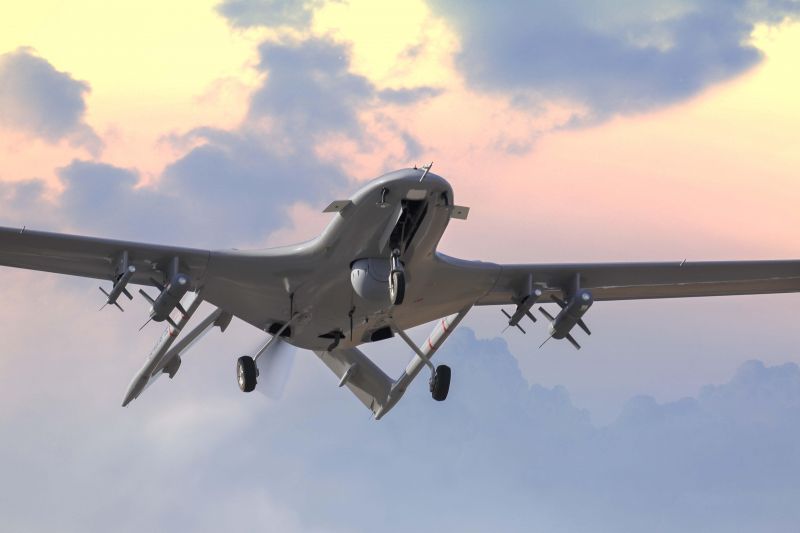Ukraine War – Lessons For India - 1
Employment of Aerial Platforms
By Col Pramod Ninan (Retd)

The world is focused on the Russian Ukrainian war drawing conclusions on various fronts. Assuredly, this war is a display of military technology combined with grit and determination. All types of military hardware have been used in this war. However, what stands out is the employment of unmanned aerial vehicles and drones in various roles. Having experienced a drone attack in January 2018 at the Khmeimem Air Base and Tartus Naval Facility, Russian forces would have been better prepared to thwart such drone attacks. This war will be quoted for years to come and is likely to be the foundation for drone and anti-drone employment doctrines.
Ukraine has claimed the success of employment of Turkish Bayraktar TB2 against Russian logistics convoy and missile sites. The chief of Ukraine’s air force has termed these drones as “life-giving”. In addition to the military advantage of delaying the Russian advance, the videos of these drone attacks have been used imaginatively as part of Ukraine’s information warfare. Russia on the other hand, have not been able to exploit the employment of UAVs. As such, the Russian inventory overpowers Ukraine in airpower but comparatively lacks in UAV systems. This may be one of the reasons, amongst others, that Russia has not made headway despite sustained efforts.
This war is not about military might or weapons. It is about the ingenuity in employing these weapon systems. Russia despite a mighty air force as compared to Ukraine does not seem to have employed them in a coordinated manner to dominate the enemy’s air space.
Ideally, an invasion should have preceded with and should have created a favourable air space. Russian missiles and rocket artillery have been employed to target military bases in the initial assault. Reports indicate the use of Kalibr and Iskander missiles against air bases and air defence systems. Yet, the Ukraine air force has been able to carry out interdiction of the Russian invasion, especially with drones.
Russia has been building up and had already boosted up its soft and hard kill anti-drone capabilities. The Pantsyr-S1M surface-to-air missile/gun system is capable of fighting all types of unmanned aerial vehicles (UAVs), including strike drones. Krasukha electronic warfare jammers were reportedly deployed to support Russian forces in Syria and are now employed against Ukrainian drones. However, reports indicate the ineffectiveness of Russian air defence and anti-drone systems against the Ukrainian drones. This leads to a few questions which challenge the basic principles of war.
Are standoff rocket and missile attacks adequate to shape the battlefield? If so, what is the quantum that needs to be delivered?
Can an offensive lead from the ground without close air support? Russian ground forces were presumably operating without a coordinated and effective air defence umbrella.
Nations should now look deep into developing drone and anti-drone capabilities.
Basic doctrines of war cannot be overlooked and no enemy should be considered weak. It raises the question of whether Russia has rushed into war unprepared or is it exhibiting caution. One of the explanations could be the restrained use of military power by Russia on purpose.
Russia has perhaps applied just adequate force to achieve their immediate aim and not conflagrate into an all-out war. The employment of heavy military weapons may influence the conflagration point. It is also likely that Russia has considered minimal damage to the civilian population and assets. Meanwhile, military experts are keenly monitoring the progress and wondering whether the face-off would result in a catastrophe. Ironically, the brunt of this war will be faced by the citizens of both countries and by the global economy.
Closer to our national interests, there is an urgent need to develop indigenous technology and military hardware. Drones and anti-drone systems are emerging as the deciding factor of any war. Armed UAVs or UCAVs have the potential to isolate a specific sector of operations, whether in offensive or defensive operations. Indigenous manufacturing of drones needs impetus. Development projects by Indian DRDO need to keep pace with advanced technology. The need of the day for Indian armed forces is aerial weaponised platforms with surveillance capabilities. These two facets, though different should be developed simultaneously.
*Author is an Indian Army veteran. Views expressed here are personal.
This is first of a series of articles on the lessons to be learned from the ongoing Russia-Ukraine conflict.




